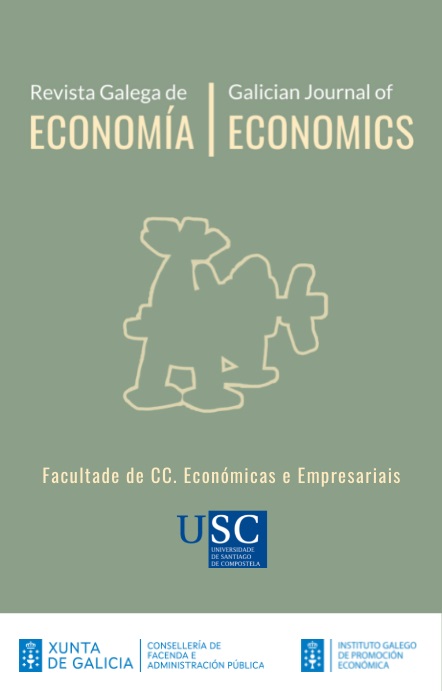GLOBAL COMPETITIVENESS, NEOINDUSTRIALIZATION AND INNOVATIVE CLUSTERS: INTERNATIONAL INDICATORS AND TRENDS OF RUSSIAN FEDERATION
Contenido principal del artículo
Resumen
development of Russian Federation. Paper deals with the innovative development of the
leading countries of world economic growth. Particular attention is given to
«neoindustrialization» of economically developed countries and innovative nature of
clustering of economic space. The modern factors of global competitiveness and economic
content of the innovative transformation of the economy is specified. Theoretical
approaches and tendencies of innovative transformation of economy are proved. The
authors identified scientific, technological, production, spatial-territorial and institutionalmarket
aspects of innovative transformation. Paper includes the differentiation of the
States-leaders of industrial production in the context of key indicators of global
competitiveness. The transformation model of innovative economy formation is
presented, the indicators of global competitiveness of the Russian Federation are
considered. The authors propose structural and logical scheme of innovative
transformation of the national economic system of the Russian Federation is developed. A
graphic interpretation of the transformation of the economic system of the territory under
the influence of innovative development is proposed.
Palabras clave:
Detalles del artículo
Referencias
Boush, G.D., O.M. Kulikova and I.K. Shelkov (2016). Agent modelling of cluster formation processes in regional economic system. The region's economy, 12, 64-77.
Castillo Montesdeoca E. A. & Roget F.M.& Vázquez Rozas E.(2015). El Turismo En Ecuador. Nuevas Tendencias En El Turismo Sostenible Y Contribución Al Crecimiento Económico, Revista Galega de Economía, University of Santiago de Compostela., vol. 24(2), pages 69-84, on line at Ideas.Repec.
Dzhindzholia A., E. Popkova and L. Shakhovskaya (2015). Cluster as an Innovational and Organizational Form of State Regulation of Business. American Journal of Applied Sciences, 12, 814-819.
Europe 2020: European Strategy for Smart, Sustainable and Inclusive Growth. URL: http://ec.europa.eu/europe2020/idex_en.htm (Date of access: 01.04.2018)
European Commission Knowledge Transfer Study 2010-2012, Final Report. http://www.knowledge-transfer-study.eu (Date of access: 01.04.2018)
Feser E.J. (1998). Old and New Theories of Industry Clusters. Clusters and Regional Specialisation, ed. by M. Steiner. London, Pion Press, 78.
Gimadeeva, Je.N. (2015). The modern model of the formation of industrial cluster innovation. Economics and management: analysis of tendencies and prospects of development, 18, 150–154.
Guisan, M.C. (2017). “Manufacturing and Development in Countries and Areas of Europe and Eurasia”, Regional and Sectoral Economic Studies, Vol. 17-1, on line at Ideas.Repec.
Ketels Ch., Lindqvist, G. and Sölvell, Ö. (2012). Strengthening Clusters and Competitiveness in Europe. The Role of Cluster Organizations. [Electronic source] URL: http://gosbook.ru/node/84334 (Date of access: 01.04.2018)
Kireeva, A.A. (2015). Methodological approaches to the identification of innovative clusters. Actual problems of humanitarian and natural Sciences, 3, 33–37.
Kochetkov D. M., Larionova V. A., Vukovic D. B. (2017). Entrepreneurial Capacity of Universities and Its Impact on Regional Economic Growth. Economy of Region, 13(2), 477-488 https://doi.org/10.17059/2017-2-13
Kondratiev V.B. (2015) The return of production, or the new industrialization of the West. Portal «Prospects» http://www.perspektivy.info/productsrecovery_proizvodstva_ili_novaja_industrializacija_zapada_2016-12-20.htm (Date of access: 01.04.2018)
Kormishkin, E.D., Sausheva O.S., Gorin V.A., Zemskova E.S. (2016) Innovation and investment safety as the condition for neo-industrial development. European Research Studies Journal. Vol. 19. № 3. 94-109 pp.
Kucenko, E.S. (2009). Clusters in the economy: practice identifying. The generalization of foreign experience. Observer, 10 (237), 109–126.
Moser H. (2016) Reshoring: The Trend from Globalization to Localization. – URL: http://industrytoday.com/FlippingBook/19.4/#50 (Date of access: 01.04.2018)
Ortiz-Montes S & Núñez-Tabales Julia M., (2017) "Inclusión Financiera: Diagnóstico De La Situación En América Latina Y El Caribe," Revista Galega de Economía, University of Santiago de Compostela. Faculty of Economics and Business., vol. 26(1), p. 45-54.
Pisano G., Shih S. (2012) Producing Prosperity: Why America Needs a Manufacturing Renaissance. Harvard. 165 p.
Porter, M. (2003). The economic performance of regions. Regional Studies, 37 (6/7), 549– 578. Renaissance of Industry for a Sustainable Europe Strategy (RISE). URL: http://greenmediabox.eu/archive/2013/10/16/a-renaissance-of-industry-for-asustainable-europe-rise/ (Date of access: 01.04.2018)
Sirkin, H.L., Rose J.R., Zinser M. (2012) The US Manufacturing Renaissance: How Shifting Global Economics Are Creating an American Comeback. Philadelphia. – URL: kw.wharton.upenn.edu/made-in-america-again/ (Date of access: 01.04.2018)
Sölvell Ö, (2009). Clusters – Balancing Evolutionary and Constructive Forces. Stockholm, Ivory Tower Pub, 136.






